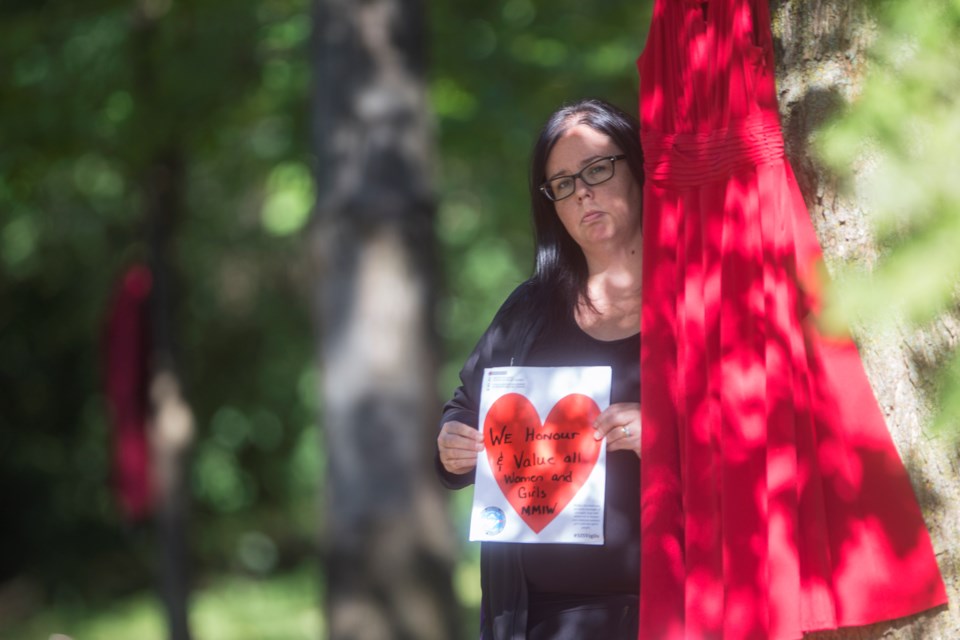Twenty-two bright red dresses blowing in the wind on the bank of the Speed River is intended to be a reminder of the estimated 1,200 missing and murdered women Indigenous women in Canada.
Kellie Grace, a staff member at Guelph-Wellington Women in Crisis, said the dresses were hung in yesterday Marianne’s Park on Gordon Street and are intended to represent the spirits of those who were lost.
“We made sure they represented women of all different shapes and sizes — and girls, because there are children,” said Grace.
This marks the fifth year the agency has hosted a Sisters in Spirit vigil and the red dress installation was added added this year after Grace — herself an Indigenous woman — saw a similar installation on Manitoulin Island.
She researched why the dresses were hung on the side of the road, which eventually led her to the original REDress Project, started in 2010 by Winnipeg-based Métis artist Jaime Black.
“She’s an artist who decided to hang red dresses in Winnipeg, Manitoba as a constant reminder of missing and murdered indigenous women across Canada,” said Grace.
Since then, noted Grace, many other groups across Canada have adopted the red dresses hanging in the wind to represent murdered and missing Indigenous women and girls.
“We decided to hang 22 dresses in Marianne’s Park to make a visual impact statement that these red dresses mean something, that we’re not going to forget these spirits, these women and these girls. We are going to continue to honour them,” said Grace.
Each dress has a tag attached explaining why it has been hung.
“We want to get people to ask the question, ‘what is this about?’” said Grace.
She said the Sisters in Spirit vigil is being held in partnership with Anishnabeg Outreach, the City of Guelph, Zonta Club of Guelph and Canadian Federation of University Women, among others.
“We do have an indigenous community here and we do have aboriginal women in Guelph that do experience domestic violence and we have families here who have had women murdered or are missing,” said Grace.
Wednesday evening at 6:30 p.m., a vigil will be held at The Boathouse, directly across the river from the park, after which the participants will cross the bridge over the Speed River to continue their vigil in Marianne’s Park by candlelight.
Immediately prior to the vigil, a documentary television episode focused on the murder of Cheyenne Fox will be screened at 6 p.m. at The Boathouse.
“It talks about leading up to the murder and how it has affected the family afterwards,” said Grace.
Almost two dozen dresses were hung in Marianne’s Park on Monday and four more were hung the previous week in front of the Women in Crisis office.
The location of the park is itself significant, as it is named after Marianne Goulden — a volunteer and staff member at Women in Crisis who was stabbed to death by her husband in January of 1992.
The park is used for many events Women in Crisis participates in, including Take Back the Night and their Dec. 6 vigil in remembrance of the 14 women killed in 1989 at École Polytechnique de Montreal.
“The City has given this park in recognition of Marianne as a reminder to domestic violence, which is prevalent in Guelph,” said Grace.
